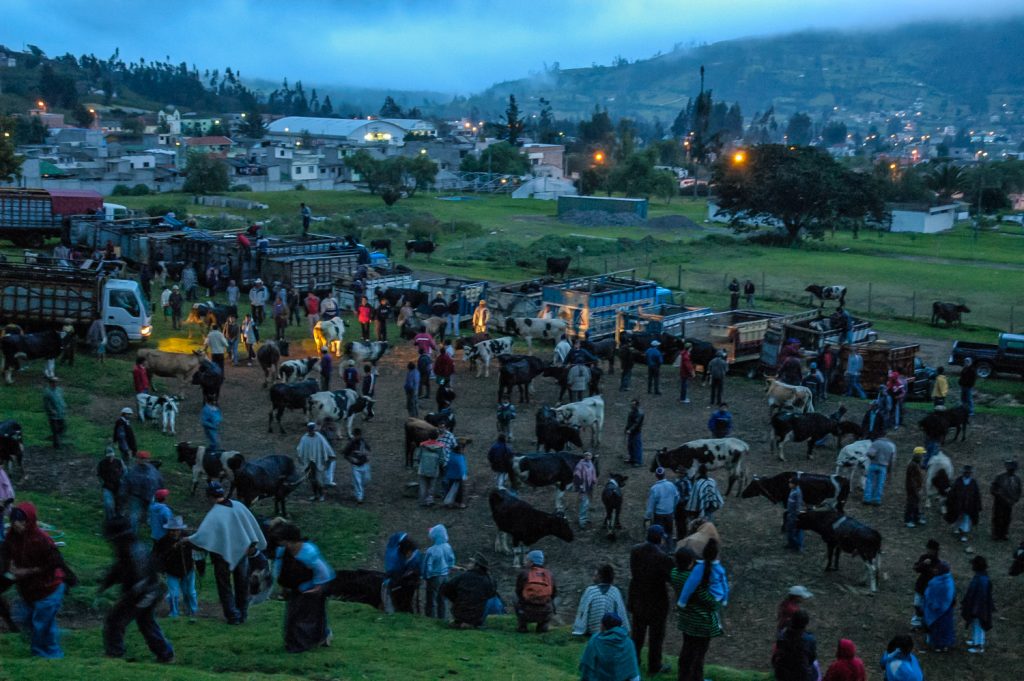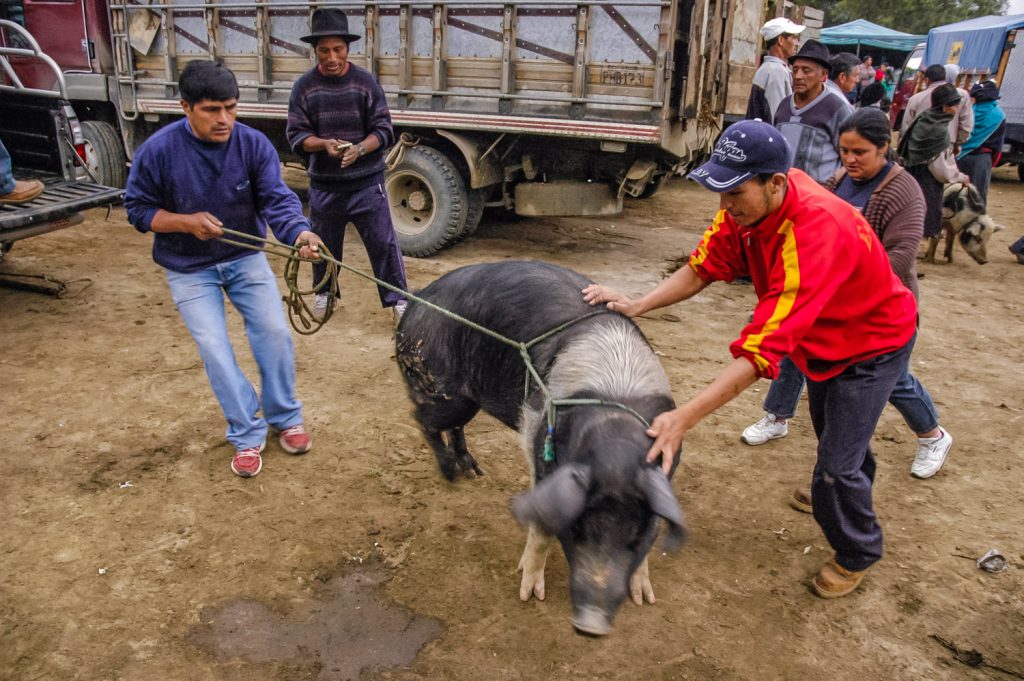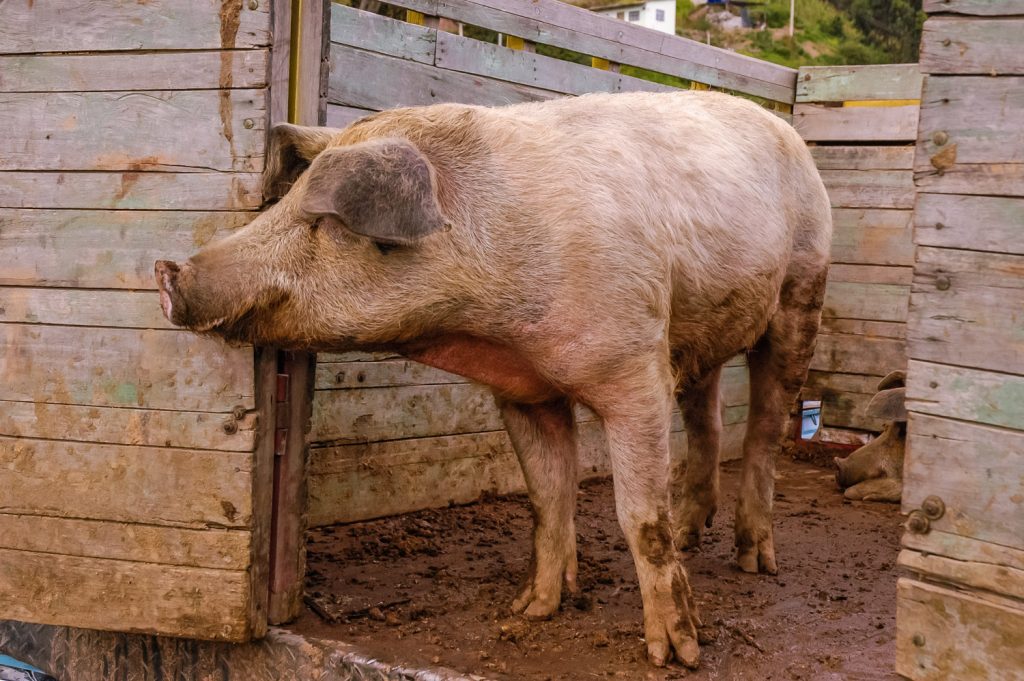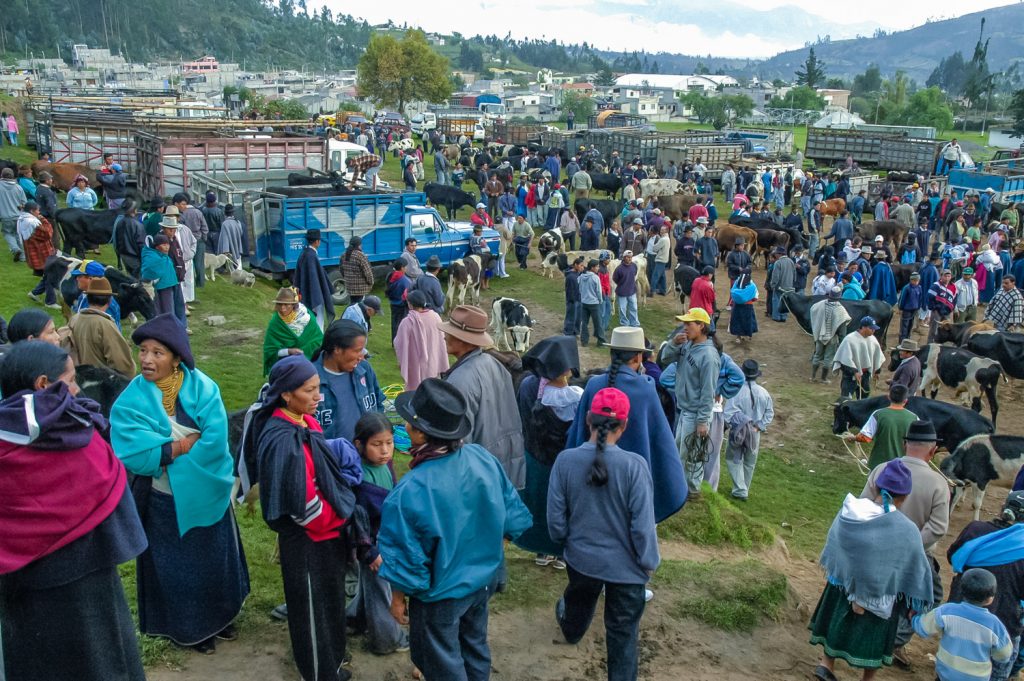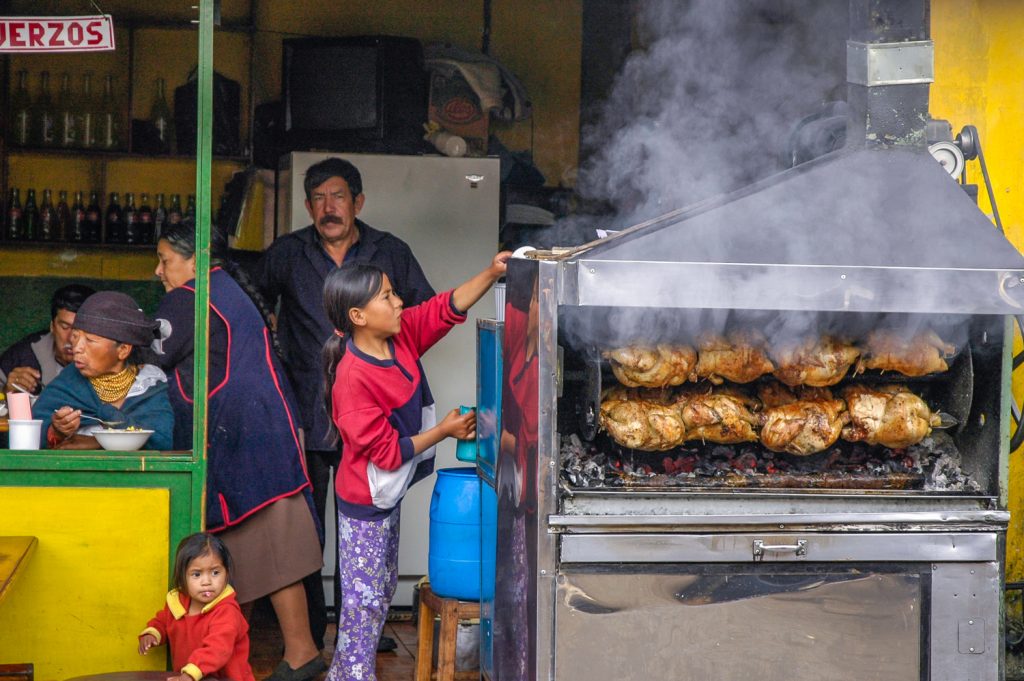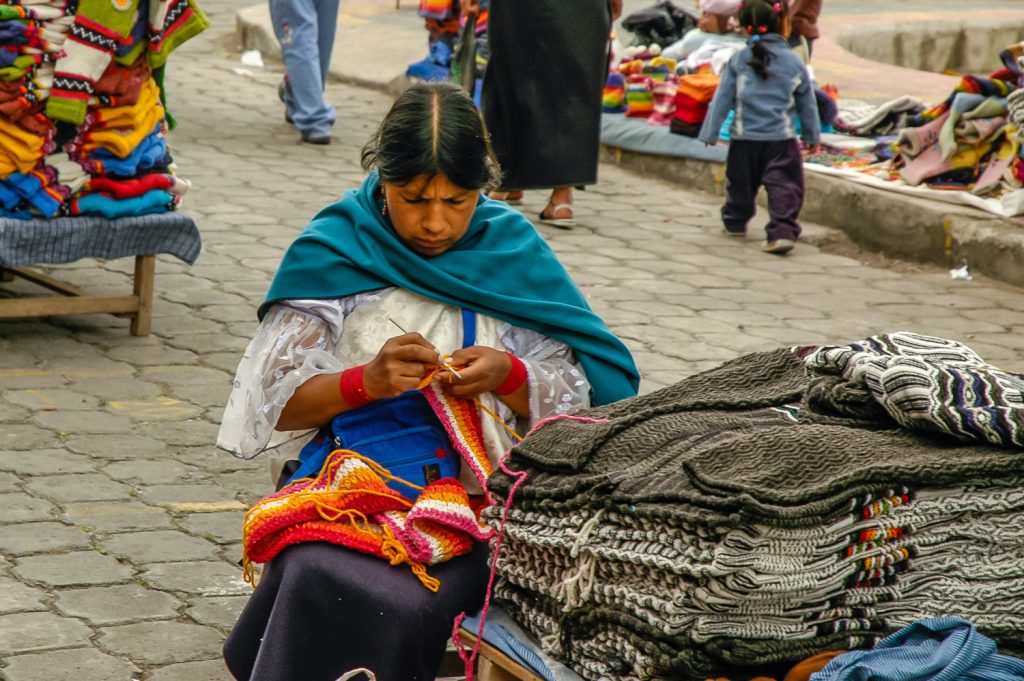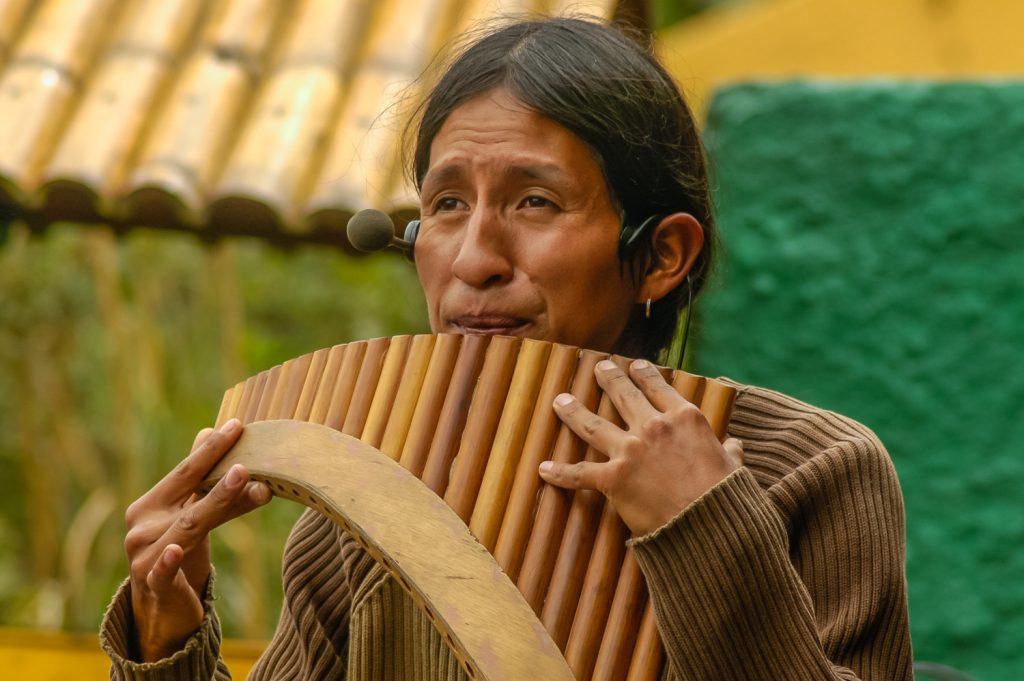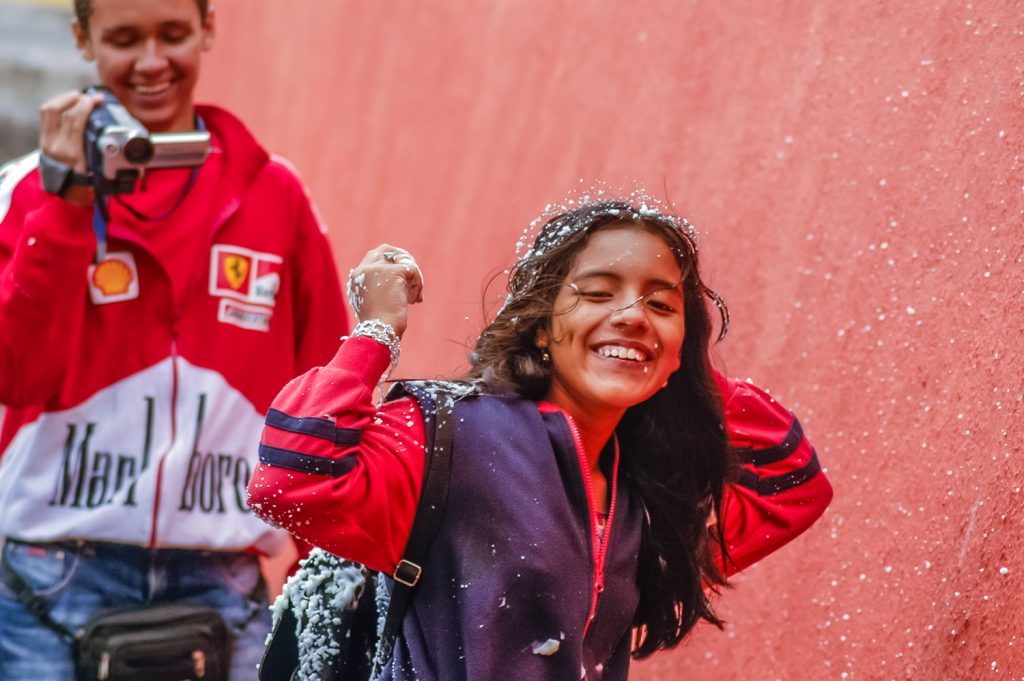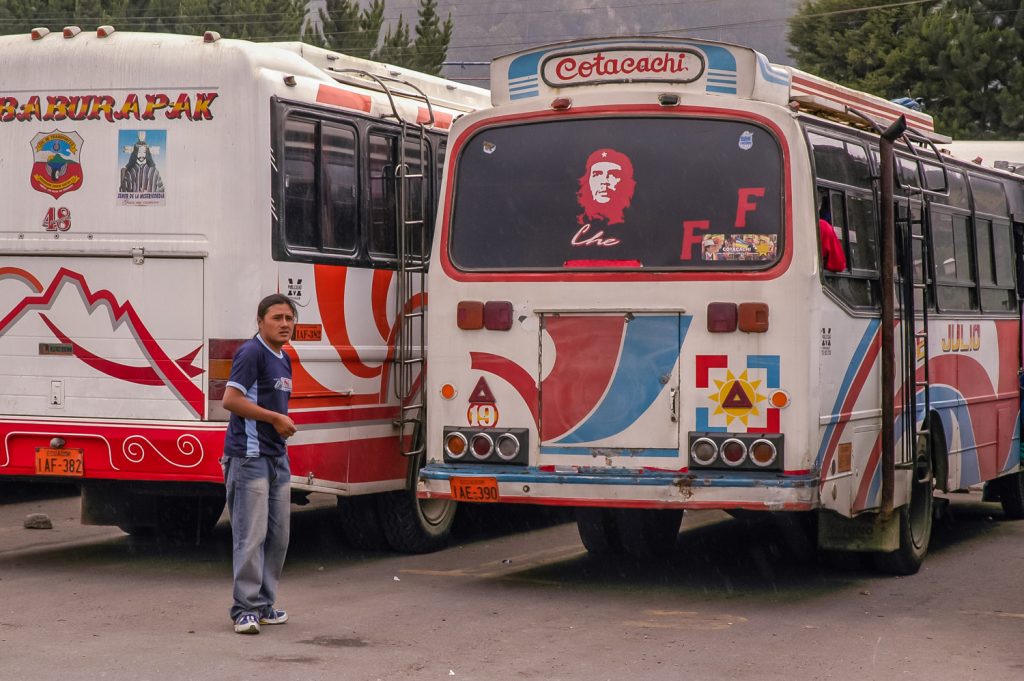
Written: Otavalo, Ecuador
I first heard of Otavalo in 1974 when I stayed in southern Colombia. Otavalo was this cool indigenous town with a great crafts market, wonderful climate, and spectacular scenery. I never made it any further south that trip, so it was another 32 years before I actually got to Otavalo.
No doubt there’s been a lot of development here in those three decades, and many changes. There certainly weren’t two Internet cafes to a block in those days, or tour buses from Quito. But Otavalo didn’t disappoint after all those years.
The climate is great. There are flowers blooming everywhere and palm trees in the square. It’s comfortable in a t-shirt during the day, though you need to wear a bit more at night, but it’s not too hot. There are several extinct volcanoes surrounding the town, and nearby are several lakes.
The indigenous people of Otavalo have been weavers since Inca times, and the town has become known for its textiles. These range from higher quality work, to the cheaper stuff sold to tourists at Plaza de los Ponchos — Poncho Plaza, a permanent market. The people have been economically successful, while managing to retain their culture. The indigenous men never cut their hair, which they wear in long pony tails. The women wear fancy blouses.
Saturday is the big market day, drawing many people from the surrounding villages, as well as large numbers of tourists. In fact, today I saw many of the gringos I’d met at various places around Ecuador over the past weeks. Such is the drawing power of this market.
I woke in the wee hours and again headed first to the animal market, just outside town. It was still dark when I got there, but already there were many animals and business was in full swing. As it got lighter, I wandered through the sections devoted to cows, pigs, and sheep. There were a few horses, and I only saw one pair of alpacas. In many respects this was like the animal market in Saquisili that I wrote about a few days ago. This time I had a better idea of what would make good pictures, and I positioned myself accordingly.
Later I returned to town and wandered through the other markets, which were more extensive than Saquisili — fruit and vegetables, household goods, electronic appliances, and over course crafts and textiles aimed at tourists. There were ponchos next to Che Guevara t-shirts, paintings on leather, alpaca sweaters, hammocks, and numerous other items. Bargaining is expected, and prices in part are based on how rich and stupid a tourist appears to the seller. I picked up a few gifts, but exercised restraint.
Yesterday I took a walk out of town to one of the nearby lakes, and weather permitting, I’ll do another walk tomorrow before returning briefly to Quito.
















